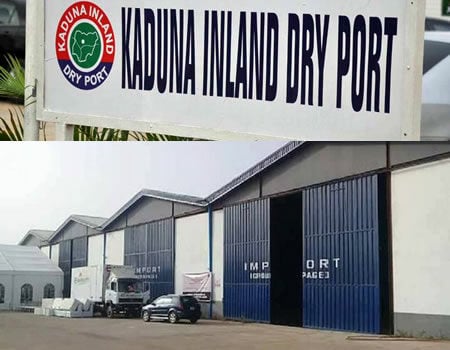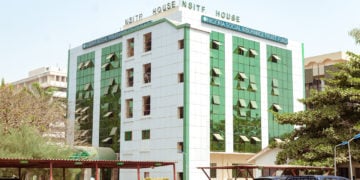The Kaduna Inland Dry Port in Kaduna State is operating far below its installed capacity due to the suspension of rail services from the Lagos seaports, following persistent insecurity and recent flooding that damaged parts of the rail track along the corridor.
Inaugurated by the late former President Muhammadu Buhari in 2018, the Kaduna Dry Port was designed to serve as a hub for cargo handling and clearance in Northern Nigeria, reducing congestion at the Lagos ports and easing trade for importers in the hinterland.
However, LEADERSHIP gathered that for several years, trains have been unable to move cargoes from Apapa Port in Lagos to the facility because of frequent bandit attacks in Niger State and flooding that washed away sections of the narrow-gauge track at Mokwa.
As a result, all cargoes destined for the dry port are now moved by road, which development stakeholders describe as costly and contrary to the objective of establishing inland dry ports across the country.
Speaking at the 2025 Nigeria Transport Sector Summit organised by the Transport Correspondents Association of Nigeria (TCAN) in Lagos, the managing director of the Nigerian Railway Corporation (NRC), Engr. Kayode Opeifa confirmed that insecurity had forced the corporation to suspend cargo movement to Kaduna by rail.
“Due to insecurity in Niger State, the NRC is unable to move cargoes by rail to Kaduna Dry Port,” Opeifa said. “However, the governors of Niger and Kaduna states are working vigorously to address the challenge,” he said.
A senior staff member of the Kaduna Dry Port, who spoke to LEADERSHIP on condition of anonymity, said in addition to insecurity, the recent flooding in Niger State also washed off a portion of the rail track, effectively disconnecting the port from the national rail network.
“Not only is insecurity affecting the transportation of cargoes from Lagos Port to Kaduna Dry Port, but also the flood that washed away part of the rail line,” the source explained. “We expect the NRC to repair the damaged section so that when security improves, importers can move their cargoes to the inland port by train.”
With train operations grounded, the dry port relies solely on trucks for cargo movement, an option logistic operators describe as expensive, slow, and unsustainable.
Stakeholders fear prolonged inactivity could discourage importers from using the facility, undermining the federal government’s plan to promote inland dry ports as regional trade and development engines.
Despite the challenges, the NRC and the affected state governments have committed to restoring rail operations once the security situation stabilises and the damaged tracks are fixed.





